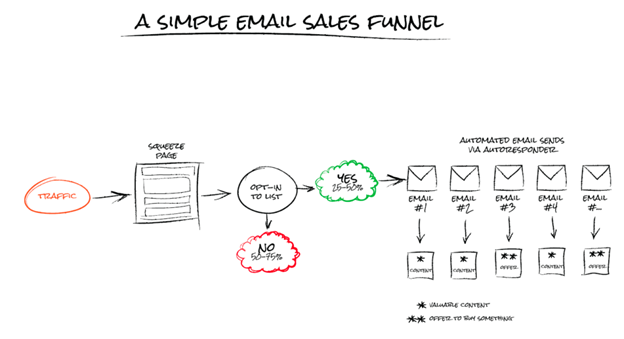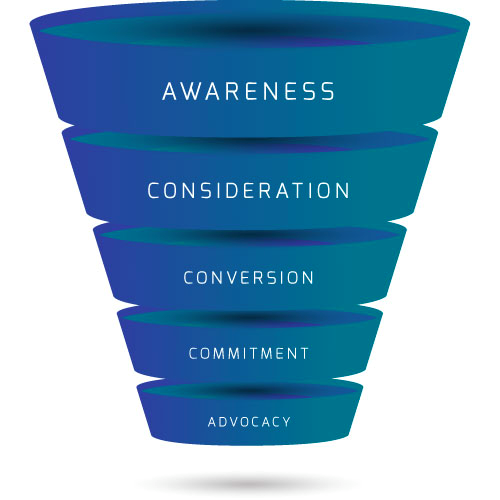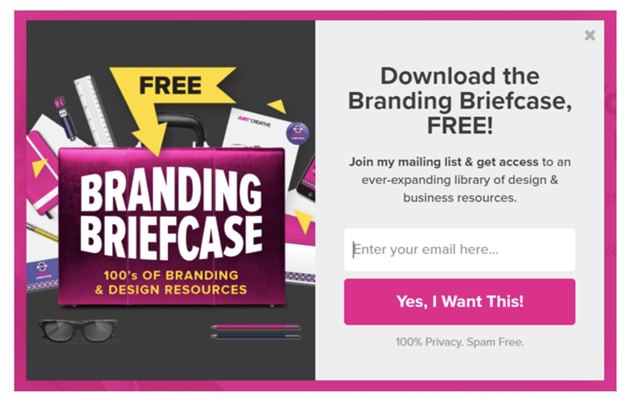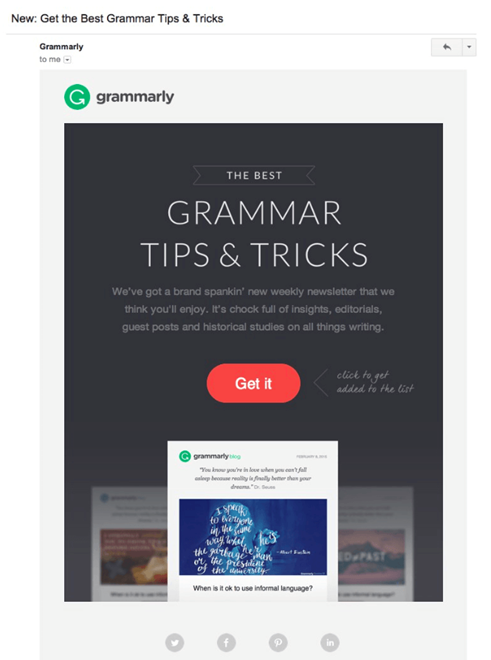How to Build an Email Marketing Funnel?
Not everybody is ready to buy your product the first time they visit your website. Some are just searching, some stumbled across your site by chance and will never return, and some just need a push to get to the finish line.
Different leads are in different stages of the marketing funnel, and it is your job to use your email marketing skills to drive them down the funnel to bring them closer to making a purchase.
The way you communicate with them, the content you present them, and the sort of emails you send them can differ depending on where they are in the funnel.
In this article, I’ll share with you how you can create a marketing funnel to keep your leads engaged and convince them to buy what you’re selling.
Why should you build an email marketing funnel?

Traditional marketing techniques no longer work for today’s customers, and sales promotional campaigns toggle them off. An email marketing funnel is distinct in that it enables marketers to deliver messages at the appropriate times, allowing each email to be customized for each subscriber. Personalization alone will increase your open rates by up to 26%.
Email marketing funnels treat your lead as a person, not just a name on a list, allowing you to pinpoint where they are in the buyer’s journey and interact effectively. There are many benefits to creating an email marketing funnel. Some of them are:
-
Did you know that getting a new customer is ten times more expensive than selling to an existing one? You’ll be able to acquire new leads while retaining your current ones if you use an email marketing funnel.
-
With the right technology, your email funnel will continue to sell for you on autopilot, just like a professional salesperson working around the clock (with less invasion and hard sales pitches).
-
When you consistently provide a meaningful brand experience to your consumers, they will become your very own super-fans who will campaign for your products. You can get them there with an email funnel.
5 Marketing funnel stages

The stages of a marketing funnel refer to the likelihood of a customer making a purchase. When prospects move towards the bottom of the funnel, their chances of becoming a customer increase.
Not every prospect that enters the funnel becomes a customer, so the goal is not turning every prospect into a customer, but converting as many of them into a customer as possible.
1. Awareness
Awareness is the first stage at the top of an email marketing funnel. This is where you show your service to your visitors and focus on capturing leads.
Your customers come from a place of awareness. You will inform your customers by doing the following:
-
Search engine
-
Blog posts
-
Marketing on social media
-
Pay-per-click ads
-
Referrals
Offering free value at the first contact is the most effective way to capture leads. Provide them with valuable offers such as:
-
A PDF template
-
Free trial
-
Discount/coupon
-
Giveaways, and so on
This allows prospective customers to get a sense of what it’s like to do business with you. If you are doing B2B email marketing, you should do this. It will help in the growth of a productive customer relationship.
2. Consideration
When your subscribers’ interest is provoked, they will want to learn more about your business. They will notice what you’re offering.
Similarly, during the consideration process, you should be doing the same thing. Learn all you can about your customers!
You can do so by providing tailored content and more of what attracted your subscribers in the first place.
The goal in consideration of your email funnel is to deal with the problem your customers are seeking to solve and discover what they are specifically looking for.
This demonstrates that you are aware of their goals, background, and desires. Use this information to recommend the best solutions to their problems.
Use a variety of touchpoints to help the customer progress through your marketing funnel. Always remember to provide a simple call to action after and touchpoint so that your leads know what to do next.
3. Conversion
This is where you need to focus on what sets you apart from your competitors. Share current customer testimonials, rewards, and an overview of how to use your products.
At this point, your email copy should include one of the following call-to-actions:
-
Try now.
-
Join us.
-
Buy now.
-
Register today.
-
Get started.
-
Sign up now, and so on.
4. Commitment
When you turn leads into customers, the goal is to make the relationship last forever. If you keep providing your customers value, you’ll be in a better position to increase their loyalty to your brand name. Sending customers relevant email content in this stage increases their lifetime value.
5. Advocacy
Advocacy happens when the customers become more than just a customer; they become an advocate for your brand and spread the word among their friends and family.
Focus on gathering insights during this stage when customers are happy with their experience with your business. This could take the form of customer reviews. It is important to collect feedback to better the product or service.
Devoted customers will promote your company on your behalf. Establish a customer delight scheme to reward loyal customers for their reviews to promote brand advocacy.
How to build an email marketing funnel

Building an effective email marketing funnel requires planning. The following steps will focus on creating an email marketing funnel to turn a new lead into a loyal customer.
Email marketing funnels can also be used for a range of purposes, including re-engaging inactive customers, upselling current customers, and more.
Step 1: Identify your target audience
The more you understand your target audience, the easier it will be to provide them with relevant and valuable content.
If you have built a buyer persona, you can use it to recognize potential consumer questions, challenges, and obstacles.
Understanding your audience will allow you to write emails that answer their concerns and keep them interested.
Step 2: Select an email marketing automation service
An email automation system will deliver the emails in your funnel on your behalf. Email funnels are often sent in response to particular prompts, such as immediately sending a welcome email sequence after a customer completes an opt-in form. When looking for an email automation service, look for one that:
-
Can accommodate your company’s size
-
Allows for the automatic scheduling of email sequences.
-
Allows you to segment your email list into various categories.
-
Analytics and data are included for you to use in evaluating the success of your email sequence.
Fortunately, there are many email service providers available on the market today. Some popular email marketing automation providers are AVADA Email Marketing Automation, ConvertKit, Constant Contact, and Drip.
Step 3: Grow your email list
Even the best email marketing funnel in the world will fail if it has no audience. You must acquire new leads to create your email list.
One way to accomplish this is to have a free lead magnet. A lead magnet is basically a free offer that you make in return for someone’s email address. It may be a PDF download, a video, a free trial, a template, an interactive tool, or something else entirely. The trick is to ensure that your lead magnet provides real value.
To promote your lead magnet, you can use opt-in forms or landing pages. People who sign up for your lead magnet give you permission to contact and sell to them.
These new subscribers are more likely to be part of your target audience, making it easier to guide them on the buyer’s journey. Just Creative’s opt-in form is an example of a lead magnet that targets people involved in design and business tools.

Now that you’ve built an email list, it’s time to create an email sequence for converting your leads into loyal customers.
Step 4: Welcome email for new subscribers
When a prospect signs up for a lead magnet, it’s important to give them a welcome email to make a good impression. The first email you send should include the following information:
-
Provide the promised offer.
-
Welcome them to your list and introduce your business.
-
Inform them about the advantages and content that they should expect from your newsletters.
The aim of this email is to start a relationship. By delivering on the promised lead magnet, you demonstrate to recipients that you are trustworthy. At this point, don’t try to sell anything. The primary goal of this stage is to thank them for joining your mailing list.
You can also tell them how often they will receive emails from your newsletters and what the general focus of your emails will be in this email.
You can want to divide this information through several emails. In this scenario, the funnel’s first few emails may be:
-
Email 1: Greetings. Give them the promised download, thank them for joining.
-
Email 2: Instructions on how to use the free offer. If the lead magnet was a template, you might include examples of how others have effectively used it to illustrate its worth.
-
Email 3: Ask for feedback on the downloaded piece. This email could be used to learn more about your new subscribers and solicit feedback on the lead magnet.
This data will allow you to give them more focused information to assist them in the next stage of your funnel.
Read more: 11 Welcome Email Templates That Always Win Your Customers
Step 5: Nuture and educate subscribers
This stage falls into the middle of the sales funnel. The goal here is to provide value to your subscribers.
Give them advice on how to solve their challenges and the knowledge that discusses their pain points.
Include content that arouses their interest in your product or service during this stage, such as ebooks, events, reviews, videos, or testimonials.
To increase the probability of purchase, consider including samples, case studies, or free trial deals. Make it a point to show how your product works and how it can solve their challenge.
The more value you provide for your new subscribers, the more they’ll trust you and look forward to receiving your newsletters.
Depending on your product or service, the number of emails you send during this process can vary.
Step 6: Convert subscribers into customers
The bottom of the sales funnel is where you try to convert your subscribers into paying customers. The emails in this step will give the interested prospects the push they need to purchase your product or service.
You’ll make your sales pitch in these emails by making a direct offer. Your offer can include information such as a time-limited offer or an exclusive promotion to increase the sense of urgency to take action.
To create a convincing email, you’ll want to:
-
Highlight your product’s benefits and show how they will help the subscriber
-
Provide testimonials or reviews
-
Include a link to an FAQ page
-
Have one clear call to action
Step 7: Retain your email subscribers
Whether or not a subscriber makes a purchase, the email funnel doesn’t end there. Your email funnel will assist you in retaining subscribers and keeping them engaged with your business.
This step is critical because you’ve already worked hard to establish confidence and nurture a relationship. Future services are easier to sell to someone who already knows you than to someone who is new to your business.
Send emails that keep subscribers connected with your product or service, such as weekly updates or progress reports, to help attract subscribers. This technique helps keep the product or service in their minds and reminds them of their value.
Grammarly, for example, does this well by providing premium level subscribers with weekly writing reports that provide details on their tips, tricks, vocabulary, and more.

Maintain your partnership by offering useful content such as free templates, videos, or downloads. Include surveys to help you understand more about what is relevant to your customer base. This approach keeps customers interested in your brand, making it easier to sell them potential goods, services, and deals.
Step 8: Improve your email marketing funnel
Once you’ve reached a decent sample of people with your email funnel, you’ll want to assess how well it’s performing and decide if you need to change your email series.
Fortunately, your email automation provider should have the necessary data. Although there are numerous ways to measure your email series, three main metrics should take precedence over all others:
Open rates
The open rate is the number of people who have opened your email. A low open rate may mean that your subject lines aren’t capturing people’s attention or that your lead magnet isn’t reaching the right audience.
Click-through Rates
The percentage of subscribers who click on a link in the email is referred to as the clickthrough rate. It will give you an idea of how many subscribers are interacting with your content.
Read more: How to Improve Email Click-through Rate?
Conversion Rates
The percentage of subscribers who take the desired action in the email, such as clicking a download link or buying a product, is referred to as your conversion rate. If this rate is poor, either your offer or your targeted audience (or both) needs to be reassessed.
Final words
That’s it! I hope that this article has provided you with valuable tips on how to build an email marketing funnel. Please feel free to leave comments below for a further discussion on this topic!
New Posts






